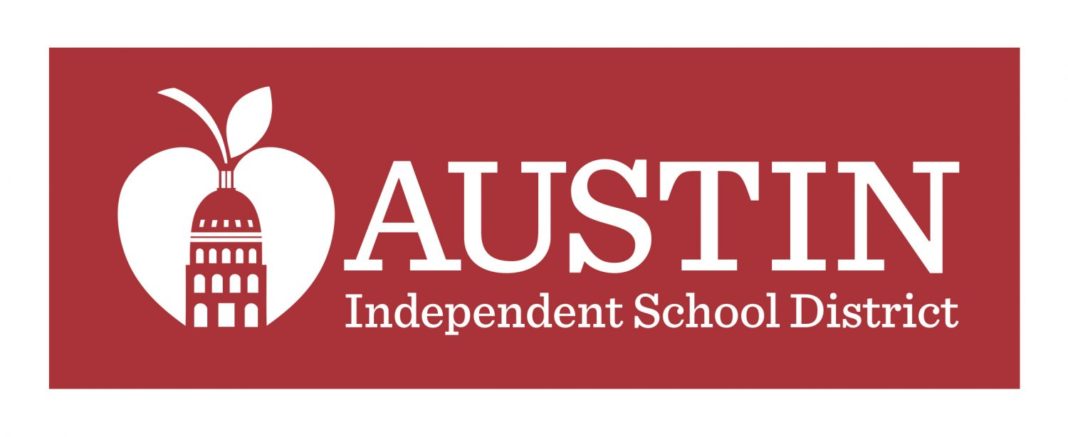As her daughter prepared to begin her freshman year of high school in Conroe ISD this year, Courtney Sandifer welcomed the news out of their annual Admission, Review, and Dismissal (ARD) meeting.
“They finally put back bell-to-bell, in-class assistance for her that hadn’t been in place since first grade,” she explained.
Across the state, parents participate in ARD committees to develop an Individualized Education Plan (IEP) that specifies the special education services their children will receive. These committees are typically comprised of parents, administrators, teachers, evaluators, and others, including, in some instances, the student themselves.
Sandifer has always considered herself lucky. She believes the “official diagnosis” of autism that her daughter received at age four resulted in access to services that other parents have struggled to obtain.
Still, she says her daughter, who she describes as “high-functioning,” experienced a steady decline in services over the years.
“Every year, up to about fifth grade, she gradually lost services,” said Sandifer. “Then she started failing the STAAR test and had a very rough year emotionally. They never added back things like speech or occupational therapy, but they finally added back more in-class aid this year.”
The restoration of services Sandifer and her daughter experienced coincides with a statewide effort to address critical deficiencies in Texas’ special education services.
Three years ago, reporting by the Houston Chronicle revealed an arbitrary cap was limiting access to the services for tens of thousands of students. In 2015, just 8.5 percent of public school students in Texas were receiving special education, compared with a national average of 13 percent.
A subsequent investigation by the U.S. Department of Education determined that Texas violated federal laws requiring schools to serve all students with disabilities.
According to a spokesperson from the Texas Education Agency, a strategic plan initiated in April of last year is in place to make systemic improvements.
“Additionally, TEA has hired a significant number of full-time equivalents to supervise how districts and charters implement special education services. We are currently collecting information on the initial year of implementation to demonstrate the successes and are also continuing work that is part of the strategic plan,” she said.
Advocates agree that the elimination of the cap and involvement of the federal government as had a positive impact.
“TEA has established a list of promises to fulfill the corrective action and has been hard at work developing content to meet those promises,” said Robbie Cooper of Decoding Dyslexia Texas. “I have seen many attempts, and there are many capable people at the agency working on directives set by the commissioner.”
Steve Aleman, an attorney and policy specialist at Disability Rights Texas, also noted that the data on special education is starting to shift in the right direction.
“The trend line for our identification rate in the state has stopped declining, and it has modestly turned upward in the last few school years, so that’s a positive,” he said. “And also, many more parents are coming forward, asking that their students be evaluated for special education services.”
However, Cooper and Aleman both remain concerned about the pace of improvements and see many issues that need attention.
“They identified, in that strategic plan, five key areas of activities. And I think you can only really say that one of them has been totally accomplished. Under the other four strands, it seems as if things are still moving very slowly,” said Aleman.
In fact, a letter sent by TEA to federal officials in May estimated the state would not be able to provide all eligible special education students with services before June of 2020.
“Parents are still facing misguided interpretations of federal law, purposefully worded to keep them from fully understanding their rights to seek services under the Individuals with Disabilities Education Act,” added Cooper.
She asserts that third-party training, from law firms pushing outdated approaches and prioritizing cost-savings, is a significant contributor to the continuing problems. School districts that instead rely on input from parents and conduct a student-focused review of their practices are leading the way, according to Cooper.
“Decoding Dyslexia tries to empower parents with accurate info and support their efforts to create positive change in their districts,” she explained. “We see that happening best when parents and schools work together to change, and cut out the dysfunction that is still ingrained in some of the bad practices of the past.”
Her organization is also partnering with several education organizations in their effort to promote substantial changes.
“We are working on initiatives with Microsoft, Made By Dyslexia, National Center for Improving Literacy and others committed to bringing solutions of evidence-based best practices to our public schools, and we encourage districts and charters to reach out to us,” said Cooper. “We can help them find better ways that are more effective than what is currently happening.”
Unfortunately, the continuing success that Cooper, Aleman, and others are pursuing will come too late for parents like Debbie Burr. She decided to move her daughter, Faythe, from a Houston ISD pre-school program to a private school in 2016.
Burr credits the state’s Early Childhood Intervention program with making sure that the public pre-school program accommodated Faythe’s autism appropriately.
“They did everything to help me transition into the public school,” she recalled. “I have a feeling if I had done that on my own, there definitely would have been some issues.
But, despite her initial experience, Burr began to lose confidence that the school could continue to provide the level of service her daughter would require.
“When she was getting close to kindergarten, they started putting her into the regular classroom to see how she would do,” said Burr. “In addition, we had some issues where she wandered off, and one time got on the wrong bus, and it was very traumatic, so we decided we didn’t want to continue services there.”
Frustrations with the process also drove Karina Pichardo to move her family from Tomball ISD to Fort Bend ISD, in search of the accommodations she believed were appropriate for her daughter’s Down syndrome.
“We believe special education is a service, not a place,” said Pichardo. “And, what the district proposed was to remove my daughter from general education and place her in the special education classroom for three hours a day in kindergarten, and then increased it to four hours in first grade.”
Despite a year-long fight for the inclusive approach they felt was necessary, the Pichardos lost their appeal and chose to relocate instead. Her daughter, now nine, spends two hours in special education classes for math and reading, and the rest of the day in general education.
“It continues to be a fight. We even considered moving to Wisconsin. Imagine that?” she added. “And sometimes when we’re still struggling here, we wonder if we should have moved two years ago. You always have to be pushing because just by itself, it’s not going to happen.”
The struggle experienced by the Pichardo family is not unfamiliar to Aleman, who considers the current state funding mechanism for special education as antiquated and outdated. Since funding is determined by the time spent in a special education classroom, rather than the unique needs of the child, it has added to the reluctance that parents face from school districts when seeking more inclusion in general education classes.
“The system has been in place for several decades now without any review until this legislative session,” said Aleman.
Aleman described House Bill 3, a school finance bill passed in 2019, as making a modest, short-term tweak to the system that added additional funding for school districts. Yet he is optimistic that further changes are on the horizon. HB 3 also created a study committee to explore more substantial improvements to special education funding in Texas.
Aleman, one of the 22 members of the Special Education Allotment Advisory Committee, said he expects the group to hold its first meeting before the end of the year, with an ambitious goal of presenting a report of their suggestions by May of 2020.
“Fundamentally, we still have challenges on making sure that everyone who needs specialized services is receiving them, and that those services are quality and properly delivered,” he said.
Success demands a comprehensive approach, says Aleman. He sees room for improvement across educational institutions. Even universities have a role to play, he explained, in terms of preparing and recruiting future educators and service providers to enter special education fields that require advanced degrees and professional certification.
“You know, everyone needs to be working towards the same goal,” he said. “I think everyone, on the surface, does seem to be wanting to do the right thing, but we just need to have a more concerted and coordinated effort to get there.
For Courtney Sandifer, she considers the reintroduction of services for her daughter a massive win with long-term impact.
“I’m feeling pretty happy that she may develop better study skills because of it,” she said. “That alone could alter her life and make college a stronger possibility than we thought.”
She hopes improvements to the system will place the emphasis where she, and parents like her, believe it belongs—on the student.
“I think the educational system needs to adapt to fit more types of learners, not try to make the kids adapt to the system. The fight should not be about how to fit your square kid into the round hole of the educational environment. It should be about how to help your square kid be the best square kid he or she can be.”







